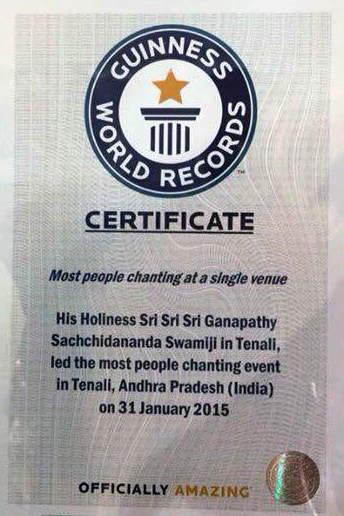To the hymn Vānara Gita, Agastya Maharishi is the Rishi, the meter (chandas) is Jagati; Hanuman is the presiding deity; ‘Maarutātmaja’ is the seed letter (beejam); ‘anjanā sūnuhu’ is the shakti (energy); ‘vāyu putraḥ’ is the kīlakam. This hymn is being recited so as to procure the grace of Lord Hanuman. It should be recited with this intent.
Hymns are not some ordinary poetic compositions, composed by eminent saints, for their pastime, sitting idly under the shade of trees while birds chirped away and water droplets fell on them from the sky. They are the greatest of mantras that flow in full force like the waters of Ganga, from the face of eminent saints, who are masters in yogic science and who have within them tremendous power of penance. It can be emphatically stated that they are statements from the Vedas.
All such compositions are for the welfare of the world; to uplift those living beings who are drowning in the ocean called repeated births and deaths (samsara). They are meant to alleviate the sorrow of the people in distress. They grant liberation. For this reason, whenever a hymn is recited, its composer (rishi), its presiding deity (Devata), its shakti (energy) etc. should all be recollected and recited. Reciting thus will ensure that the recitation will bear fruit quickly. Also, it reflects our gratitude towards the composers and others. Hence there should be no lapse in such recitation.
In this Vānara Gita, Agastya Maharishi has composed the dhyana shloka (meditation verses). From a proper understanding of this dhyana shloka, we can understand that this Vanara Gita is a supreme mantra. Any hymn that is preceded by the dhyana shloka as well as by the anganyasa and karanyasa is a great hymn.
The meaning of the dhyana shloka is as follows:
May He, who has retained the left hand on His left leg, placed the right hand in the position of Chin-mudra, who is praised profusely by all eminent saints, who has reached the pinnacle of all forms of knowledge, who is seated in the garden of plantain trees upon a gem-studded throne, who radiates with the luster of crores of Suns and who eternally meditates upon the Supreme Lord, grant me the purity of mind!
Hanuman should be contemplated upon with all these above stated points in mind. It grants purity of mind.
Om namo Hanumate namaha.

